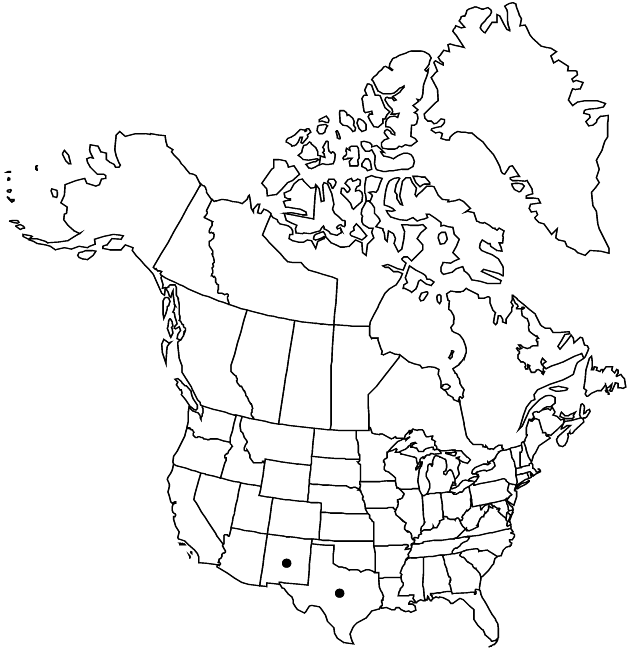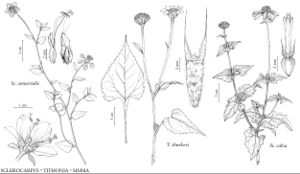Simsia calva
Boston J. Nat. Hist. 6: 228. 1850.
Perennials or subshrubs, 30–150 cm (roots ± fleshy, fusiform-thickened). Leaves: petiole bases dilated (pairs fused to form discs at nodes); blades ovate, 2–8 × 1.5–6 cm, sometimes 3-lobed. Heads usually borne singly, sometimes in 2s or 3s. Peduncles 3–30 cm. Involucres 10–12 × 7–16 mm. Phyllaries 21–43, subequal to unequal. Ray-florets 8–21; corollas light orange-yellow (abaxial faces often brown or purple-lined, or wholly brown or purple), laminae 5–16 mm. Disc-florets (26–) 90–154; anthers usually yellow, rarely black. Cypselae 3.5–5.7 mm; pappi 0 or to 4 mm. 2n = 34.
Phenology: Flowering year round.
Habitat: Sand to heavy clay soils, rock crevices, often limestone, prairies, thickets, oak savannas, along streams, roadsides, upland pine or pine-oak forests
Elevation: 30–2400 m
Distribution

N.Mex., Tex., Mexico
Discussion
Simsia calva is widespread throughout central, southern, and southwestern Texas from the southern Texas Plains to the trans-Pecos mountains and into southeastern New Mexico.
Simsia calva is distinguished from S. lagasceiformis by its perennial habit, fusiform-thickened roots, petioles winged and fused at bases to form nodal discs, heads borne singly or in 2s or 3s, and anthers usually yellow, rarely black. The common name, awnless bush sunflower, is not truly appropriate. Most populations are epappose; some have minute scales, and some populations of S. lagasceiformis (normally pappose) are epappose.
Selected References
None.
